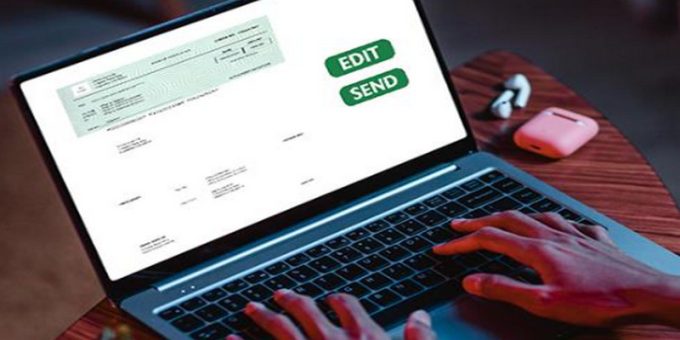
These days, few people pay with cash or written checks. These days, a lot of people use eCheck processing to do most of their financial transactions online.
These checks are another modern way to move funds across bank accounts. An electronic check (eCheck) is a convenient way to pay a debt to another individual or company. The first step is to go online and provide your bank with the same information you would use to write a paper check. After that, the money will go from your account to one of the beneficiaries. Though it functions similarly to a paper check, the beneficiary gets their money more quickly. Electronic check processing eliminates the time and effort wasted on physically transporting and waiting for the recipient to deposit a paper check. Transferring funds across accounts is also a breeze when done digitally.
Electronic checks are popular because they are convenient, quick, and safe. You cannot misplace an electronic check during transit or processing. When you’re dealing with a sizable payment, that can be more convenient (and beneficial for your mental and physical well-being). If you’re considering using electronic checks for money transfers, find out more about them and how they can help you.
Just how are e-checks distinct?
Knowing how eChecks differ from other popular payment methods is crucial in this day and age when there are so many options for making a purchase. The most popular methods of payment include cashier’s checks, debit cards, and credit cards; however, electronic checks are quickly gaining popularity.
Despite the electronic nature of eChecks and electronic funds transfers (EFTs), we can also classify other types of payments as EFTs. Despite their superficial similarities, the underlying processes for electronic checks and automated credit card payments couldn’t be more different. While electronic checks offer a convenient method of payment, most credit card companies only accept them when transferring a balance.
The bank receives the money in the form of a cashier’s check and guarantees it. You can still visit a branch in person to process cashier’s checks; however, some banks now offer the option to do so online. Since eChecks are digital, you can set them up and send them online anytime. However, banks do not guarantee the funds transferred via an eCheck.
A wire transfer is another option for moving funds between accounts. Having said that, the recipient’s account will reflect the funds more quickly. The time it takes to receive an electronic check can vary because clearinghouses process them in batches rather than as individual transactions.
How Electronic Checks Are Processed
You can initiate an e-check by filling out an online form. You may usually find this form on your bank’s website or mobile app. There may be online forms available to set up eChecks for one-time or recurring payments with large payees, such as the IRS or utility companies. The form asks for the following information: the amount to be paid, the name or company to receive the money, the bank account from which the money will be withdrawn, and the desired date of payment.
When processing an electronic check, some financial institutions may ask for an electronic signature. Most of the time, you won’t need this, as you’ll be using your own account to write the electronic check. You might have to confirm your identity with another two-factor authentication method (such as entering your PIN or re-entering your password) before you can write the eCheck.
Paper checks and electronic checks are different in important ways. The electronic check processing that occurs in bulk transactions between financial institutions is known as an automated clearing house (ACH). If customers of Bank A pay customers of Bank B a total of $1 million in a single day via several e-checks, the ACH will receive the funds first. Bank B’s account receives a credit of $1 million after deducting $1 million from Bank A’s account. Customers can view their own financial transactions in their bank accounts.
You often get instantaneous access to the funds when you deposit a paper check. The automated clearing house (ACH) must process the electronic check before you can access the funds. Because ACHs operate on predetermined schedules, the timing of receiving eCheck cash is significantly more predictable. Even though electronic checks take a few business days to process, many companies offer instant credit to clients who pay with them.
Are electronic checks secure?
Security measures protect you when you write or receive an e-check. Duplicate detection is an eCheck system feature. Instead of taking a significant sum all at once, con artists will often take smaller amounts over time to deplete bank accounts. If your account processes many e-checks for the same payee within a short period of time, you will receive an alert from duplicate detection. This functionality will also protect you if you accidentally handle the same payment twice.
Additionally, encryption measures protect eCheck transactions. This ensures that hackers are unable to decipher the digital data associated with online transactions by scrambling it. Banks and clearinghouses can decipher the transaction data, leaving everyone else who intercepts it bewildered. When you use an electronic check, your account details and other personal data are secure. Nevertheless, everyone who gets their hands on a paper check can read it.
Additionally, every eCheck has its own distinct digital signature. This has nothing to do with legally binding documents. Instead, it acts as a digital fingerprint, differentiating each purchase. You cannot change or reprocess the amount of an electronic check. These safeguards make electronic checks a safe way to pay. Compared to traditional paper checks, they are less likely to be victims of loss or fraud.
